How Welcome to Marwen‘s VFX Supervisor Transformed Steve Carrell into a Plastic Action Figure
Kevin Baillie was barbecuing in the backyard of his San Francisco home one afternoon in 2013 when he got a call from Robert Zemeckis. “Bob said ‘I’ve got this crazy script I want to send you so you can tell me what you think,” Baillie recalls. Five years and 64 million computer-processing hours later, Baillie completed his contributions to the mind-warping movie that is indeed, pretty crazy even by Hollywood spectacle standards. The challenge put forth in Zemeckis’ and Caroline Thompson’s screenplay: transform Steve Carrell into an emotionally compelling plastic action figure inspired by the real-life story of Mark Hogancamp.
As recounted in a 2010 documentary, Hogancamp suffered brain damage caused by a brutal beating outside an upstate New York bar. To deal with the trauma, he built miniaturized World War II combat scenarios in his backyard anchored by a 12-inch action figure named “Hogie.” With help from Barbie Doll-like figurines (Leslie Mann, Diane Kruger, Merritt Wever, Janelle Monáe), hand-painted to resemble his real-life circle of friends, “Hogie” fights Nazis toy soldiers as Hogancamp himself finds the courage to confront his attackers. Baillie, who previously collaborated with Zemeckis on Allied, The Walk, Flight, and A Christmas Carol, says “It took us a long time to figure out how to show the soul of these actors through the dolls, and not let the dolls be an excuse for not letting the performances shine 100 percent.”
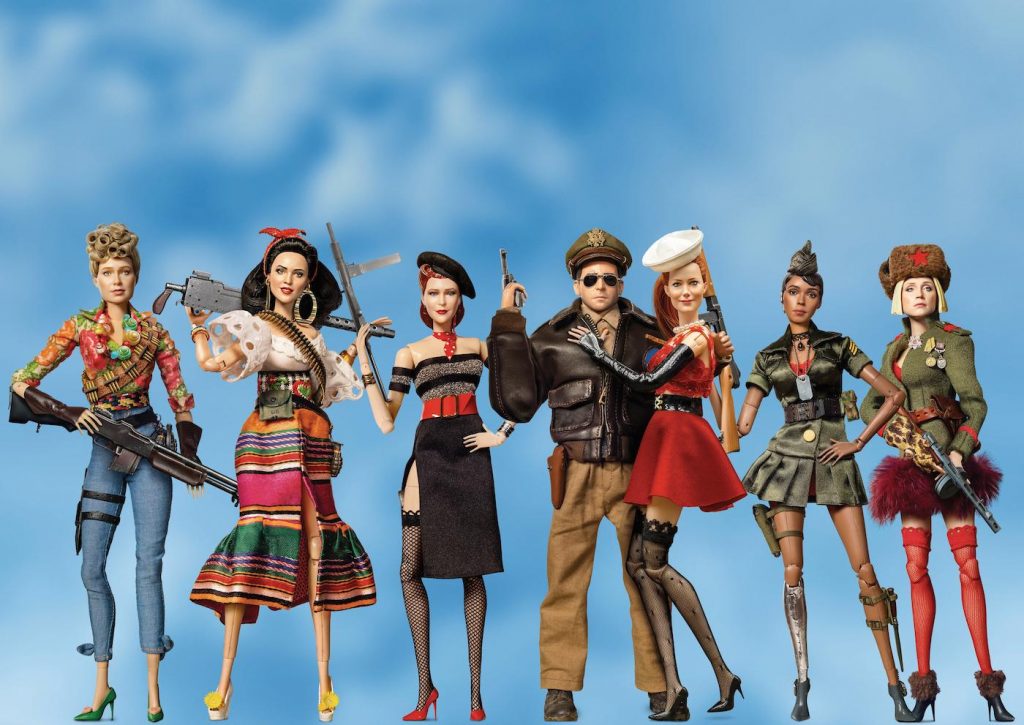
The filmmakers needed to create plastic-skinned characters that moved with doll-like joint articulation. Their first idea flopped miserably, Baillie says. “Initially our plan was to dress Steve Carrell and the other actors in costume and build giant sets so the characters look small scale. But when we ran a test, it looked horrifying. The actors just looked like they were wearing really fancy Halloween costumes.”
When the doll-costume concept fizzled, Zemeckis and Baillie turned to motion capture. Zemeckis had pioneered the technology years ago with The Polar Express and A Christmas Carol, but some critics complained that the movies’ characters were plagued by “dead eye” facial expressions. Baillie says “Bob didn’t want to get any of that criticism this time around so we decided to put actors eyes and mouth into a fully digital doll. And it worked.”
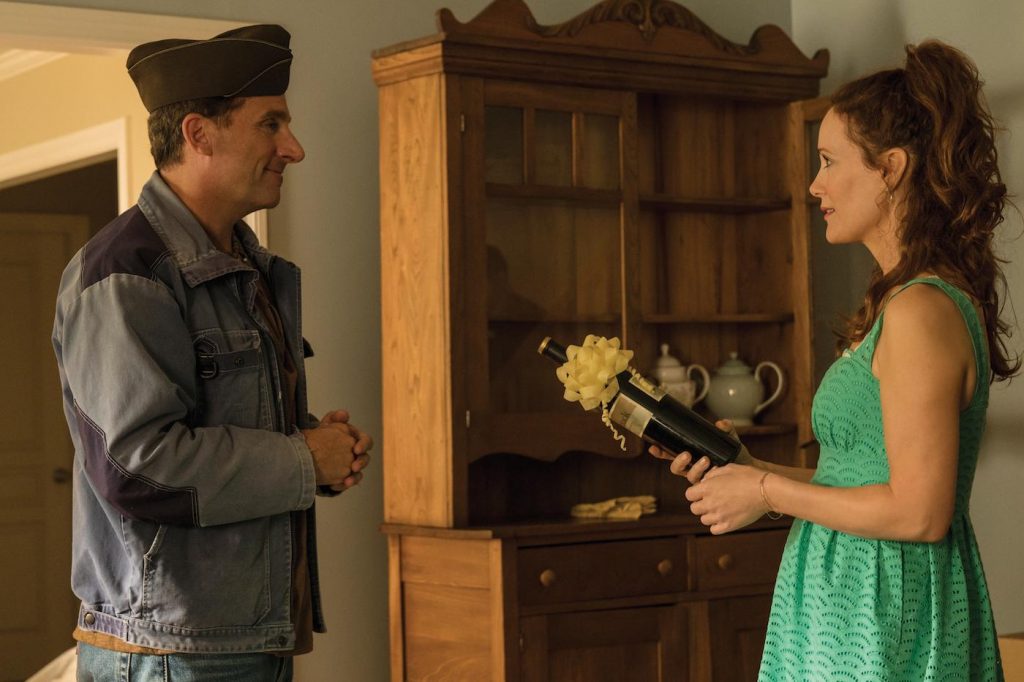
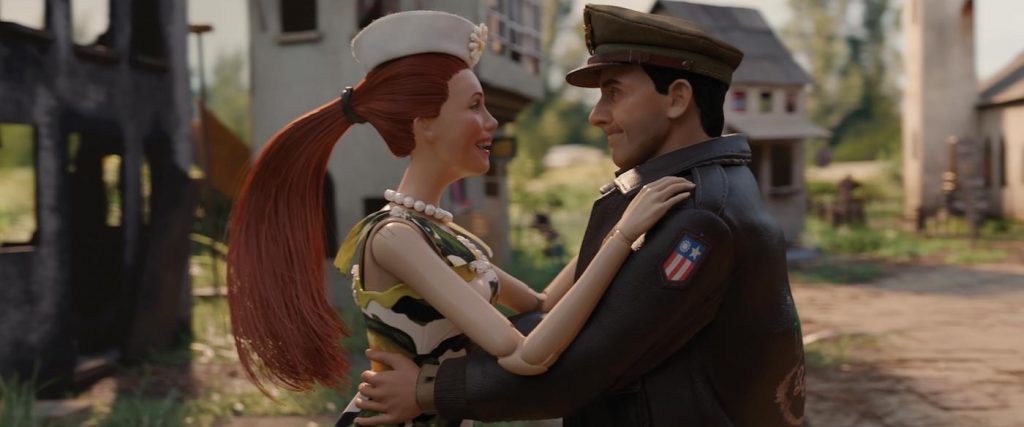
Each Welcome to Marwen character was constructed collaboratively by miniature makers led by supervisor Dave Asling (X-Men: The Last Stand), digital hair designer Anne Morgan, who transformed Bryan Cranston into LBJ for bio-pic All the Way, and Oscar-winning makeup designer Bill Corso (A Series of Unfortunate Events). Baillie explains, “There was a huge amount of back and forth between the physical and digital departments for the dolls, beginning with 3-D scans of Steve and the other cast members.” Taking a deep breath, Baillie recaps the process. “It starts with the actor, then becomes the digital version of the actor, then becomes a digital version of their doll, then becomes a real doll. Then we photographed and re-scanned those dolls to make sure that the human-sized digital version of the doll shows every nick in the plastic, every little imperfection of the physical sculpt, right down to the little tufts of fuzz on their costumes. We do all of that in pre-production before the actors perform.”
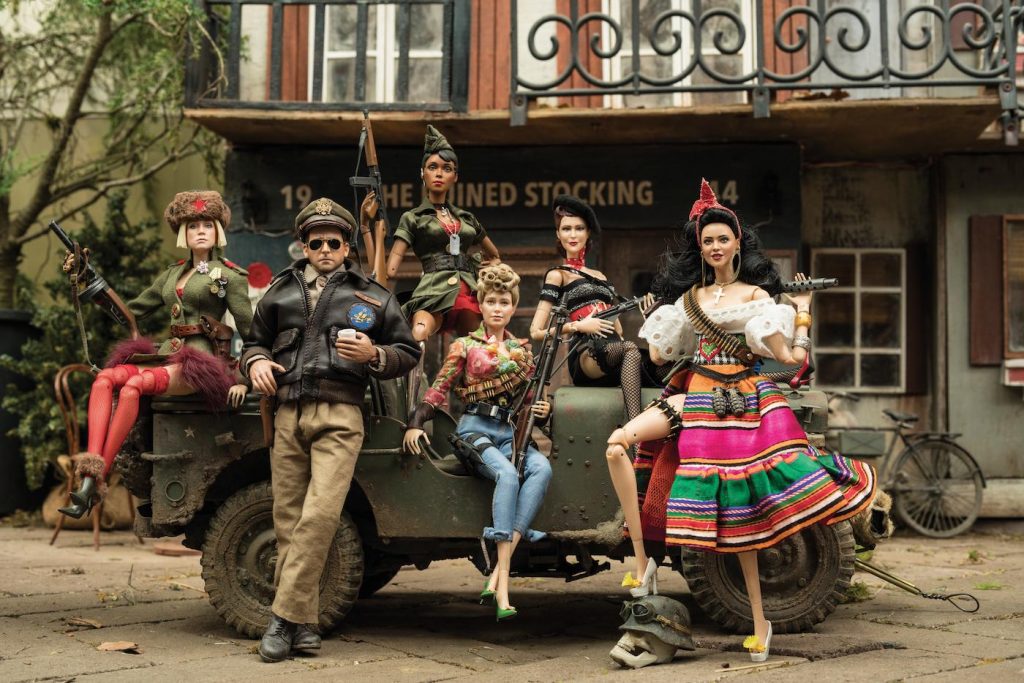
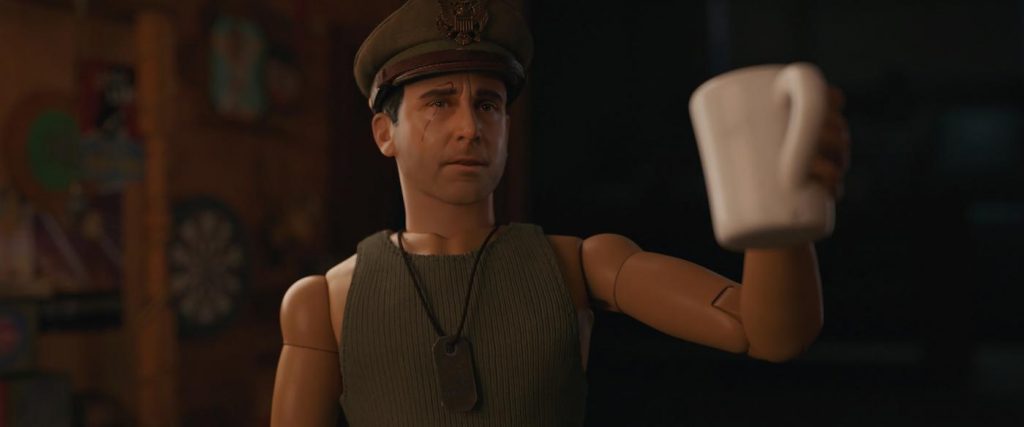
When the actors showed up in their sensor-embedded mo-cap suits on the blue screen stages of Martini Studio outside Vancouver, Baillie and his team used video game software to render low-res versions of what the shot would look like after CG doll parts were swapped in for the actors’ bodies. “We had two monitors on set,” he says. “One screen showed the actors in their mo.-cap suits. On the other monitor right below it, you saw this video game representation of the final shot, which allowed the actors to preview the fruits of their labors right then and there. It was fun to watch the performers have this ‘aha!’ moment when they’d run over to the monitors and see the playback of themselves as dolls in the world of Marwen.”
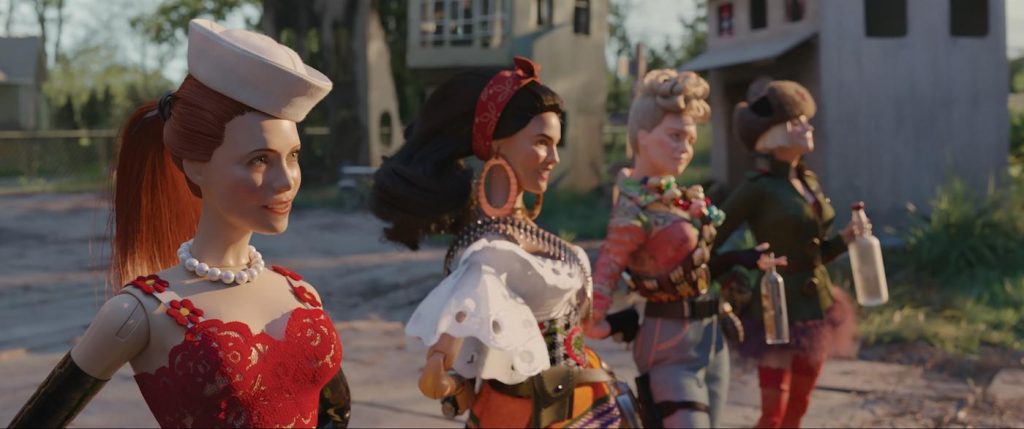
in “Welcome to Marwen,” directed by Robert Zemeckis. Courtesy Universal Pictures
Baillie, a VFX teen prodigy who worked on George Lucas’ Star Wars: Episode I – The Phantom Menace fresh out of high school, focused on “making cool stuff” earlier in his career. But Welcome to Marwen departs from the sci-fi spectacle Baillie previously focused to address real-world trauma experienced by a real, living person. Which explains why Baillie felt a surge of anxiety when he heard that Steve Carell had gotten a call from Hogancamp himself after the movie’s first trailer went public. “I remember being worried: ‘Oh f*** maybe he didn’t like the trailer.’ But instead, Mark told Steve, ‘I watched the trailer 12 times and cried every time. I loved it!’ It made me proud to hear that we did him justice.”
Featured image: The dolls of the fictional town of Marwen celebrate inside The Ruined Stocking nightclub (from left): GI Julie (Janelle Monáe), Nicol (Leslie Mann), Cap’n Hogie (Steve Carell), and Anna (Gwendoline Christie) in “Welcome to Marwen,” directed by Robert Zemeckis. Courtesy Universal Pictures



